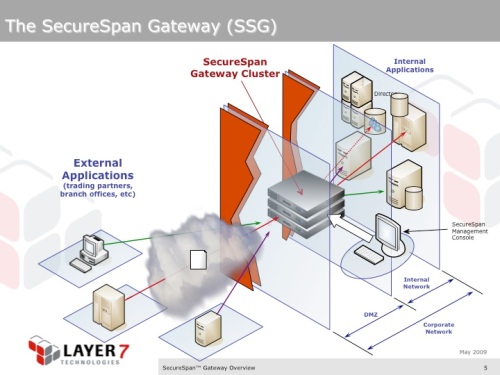It has been quite a week for SOA. First, TheServerSide published a presentation delivered at their recent Java conference by Rod Johnson from VMware in which he essentially accused SOA of being a fad. Normally this is the kind of comment people would overlook; however, Rod, who is SVP, Middleware and GM of the SpringSource division at VMware, is very well regarded in the Java community, so his comments certainly carry weight.
First to cry foul was Dave Linthicum writing in Infoworld, who made the important point that “SOA is something you do” whereas “cloud computing is a computing model.” Joe McKendrick at ZDnet quickly followed up, adding that “too much work has gone into SOA over too many years at companies to relegate it to “artificial fad” status.“
To be fair to Rod, his actual statement is as follows:
If you look at the industry over the past few years, the way in which cloud computing is spoken of today is the way in which SOA was spoken of four or five years ago. I think with respect to SOA, it really was a fad. It was something that is very sound at an architectural practice level, but in terms of selling product, it was really an artificial, marketing created, concept.
And in many ways, it is hard to disagree with him. As a SOA vendor, I’m as guilty as anyone of… um… perhaps being overly enthusiastic in my support of SOA. So it’s perhaps not surprising that it would all lead to an eventual backlash. Anne Thomas Manes was certainly the most effective at calling us all out a few years ago.
Putting hype cycles behind us though, it would be a shame to miss the real impact that SOA has had in the enterprise. I would argue that SOA is in fact a great success, because while the term may have gone out of fashion, we have absorbed the ideas it described. I don’t need to write about the vision of SOA anymore; my customers seem to know it and practice the concepts without calling it such. And I don’t seem to need to evangelize my own SOA products the way I once did, simply because people accept SOA Gateways as the architectural best practice for run time governance.
This seems to be supported by an article Forrester analyst Randy Hefner published in CIO later in the week. In it, he describes the results of a survey they conducted earlier in the year. Randy writes:
organizations that use SOA for strategic business transformation must be on to something because they are much more satisfied with SOA than those that do not use SOA for strategic business transformation.
Randy’s report examines the use of SOA—apparently in its full three letter glory—as a tool to transform business. It’s a good article because he manages to distill so much of the theory and hand waving that turned people off into some concrete, prescriptive actions that just make sense.
He closes with this insight:
SOA policy management is an advanced area of architecture design, and policy-based control of services is the business-focused SOA practice that takes the greatest amount of SOA experience and expertise. Forrester first published its vision for SOA policy management three years ago, knowing it would take a while to mature in the industry, and indications are that interest in SOA policy increased significantly this year over previous years.
Given my own experience over the last year, I would agree entirely, and suggest that we are there.








 an investment in Identity and Access Management (IAM) infrastructure; however, this is not sufficient on its own for SOA access control. That’s where Layer 7 can help. Deployed in combination with an IAM system like OpenSSO, SecureSpan does the heavy lifting of XML processing and enforcement, but delegates the access control decision process (and often identity token validation) to the existing, familiar IAM infrastructure. It’s a powerful combination, and one that extends existing investment in IAM into the SOA world.
an investment in Identity and Access Management (IAM) infrastructure; however, this is not sufficient on its own for SOA access control. That’s where Layer 7 can help. Deployed in combination with an IAM system like OpenSSO, SecureSpan does the heavy lifting of XML processing and enforcement, but delegates the access control decision process (and often identity token validation) to the existing, familiar IAM infrastructure. It’s a powerful combination, and one that extends existing investment in IAM into the SOA world.